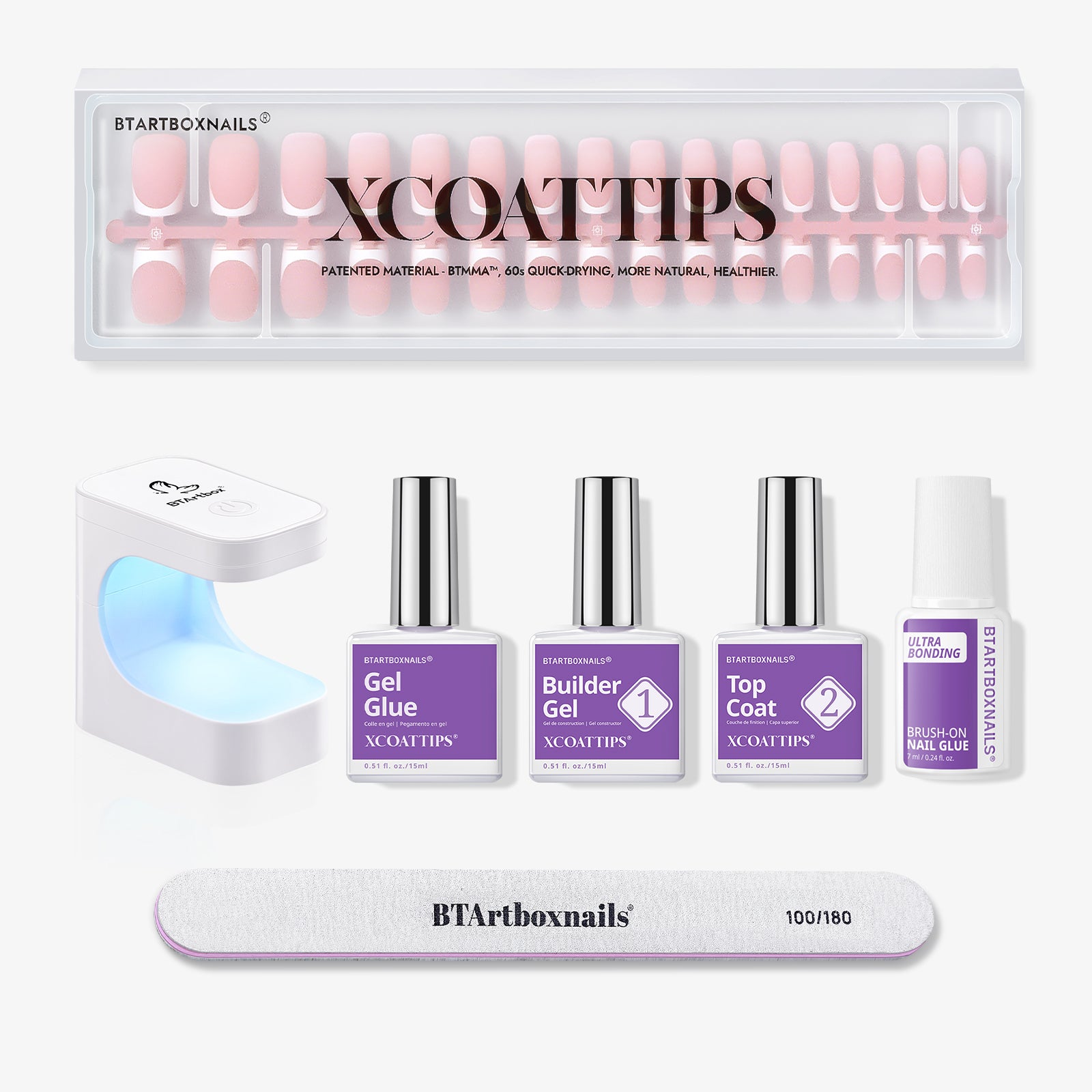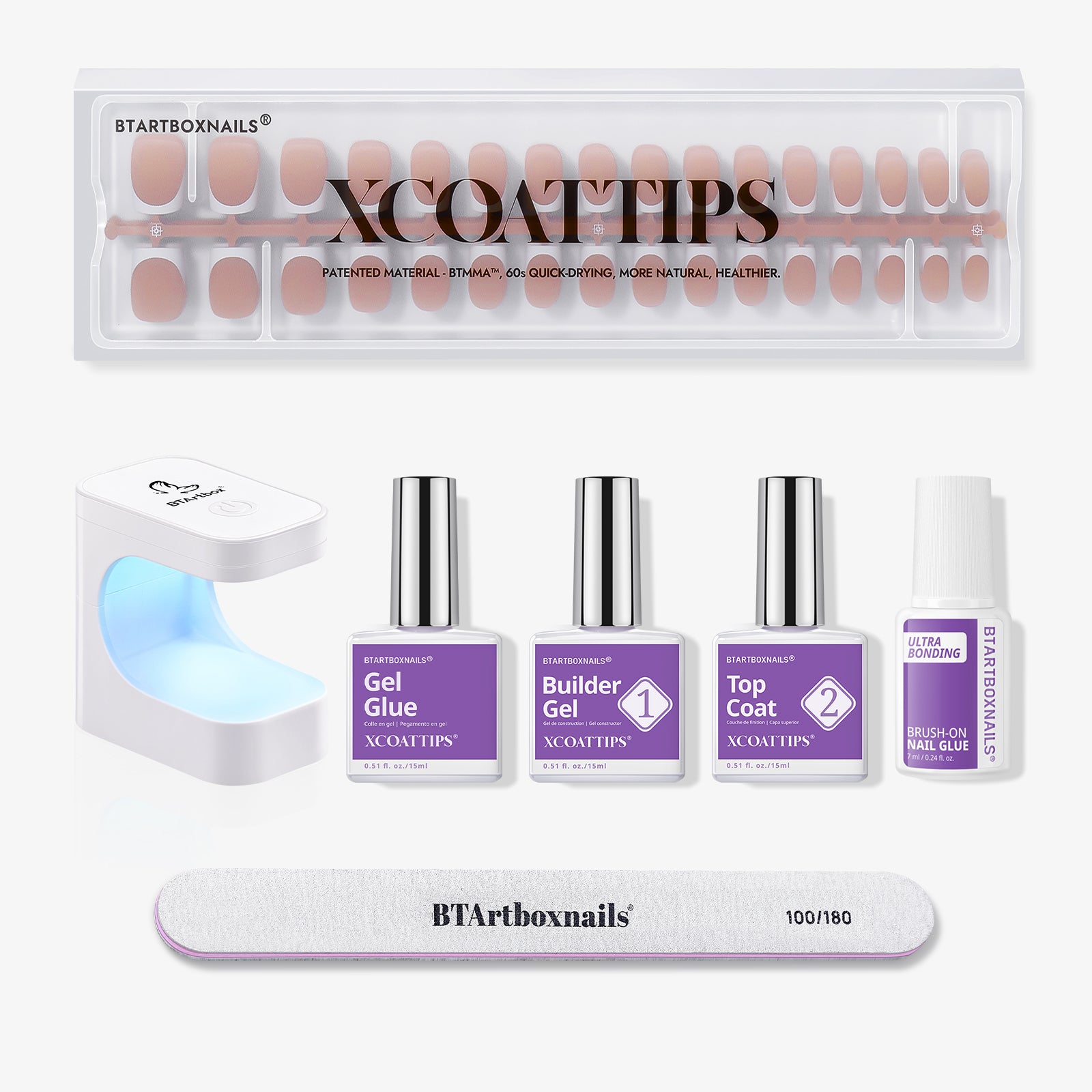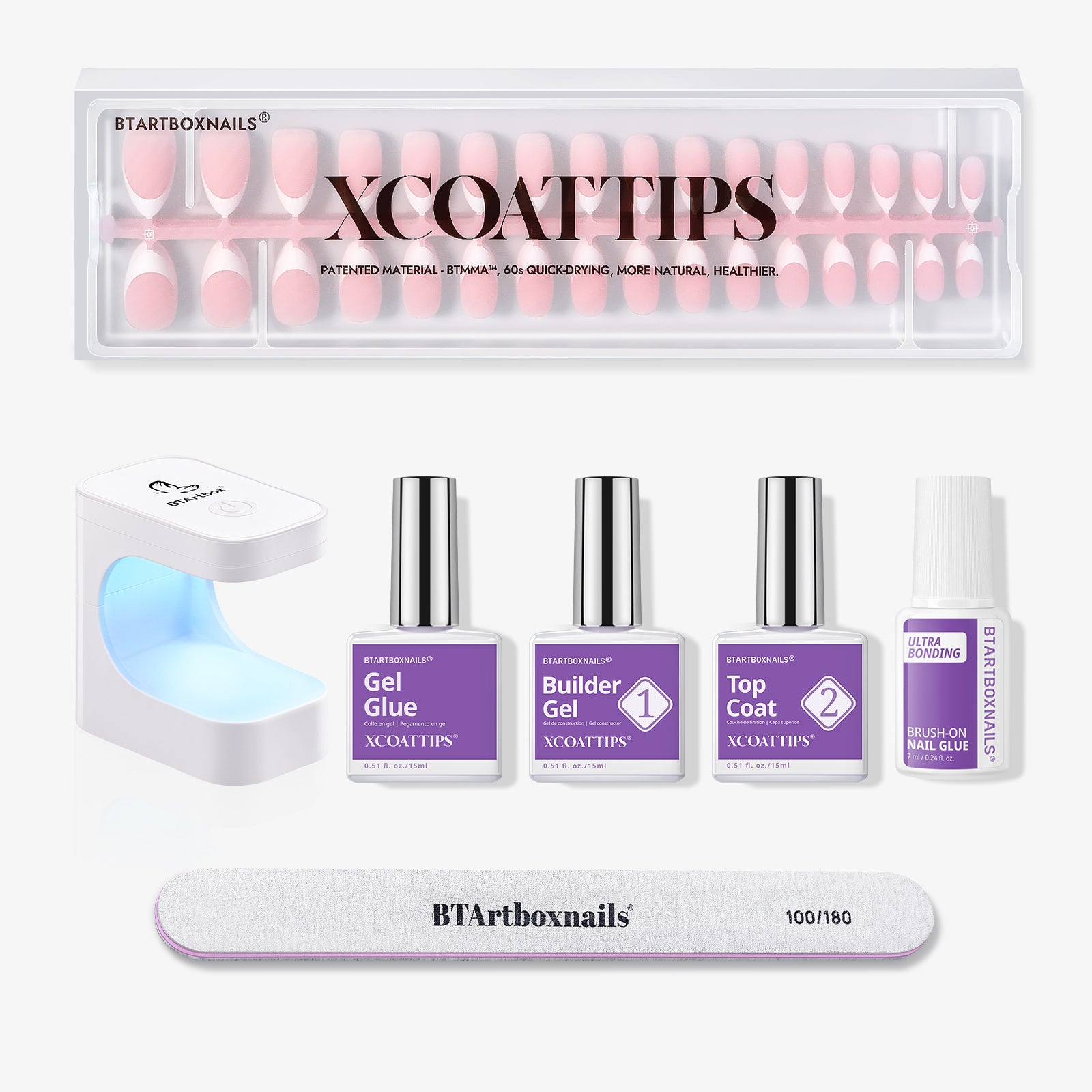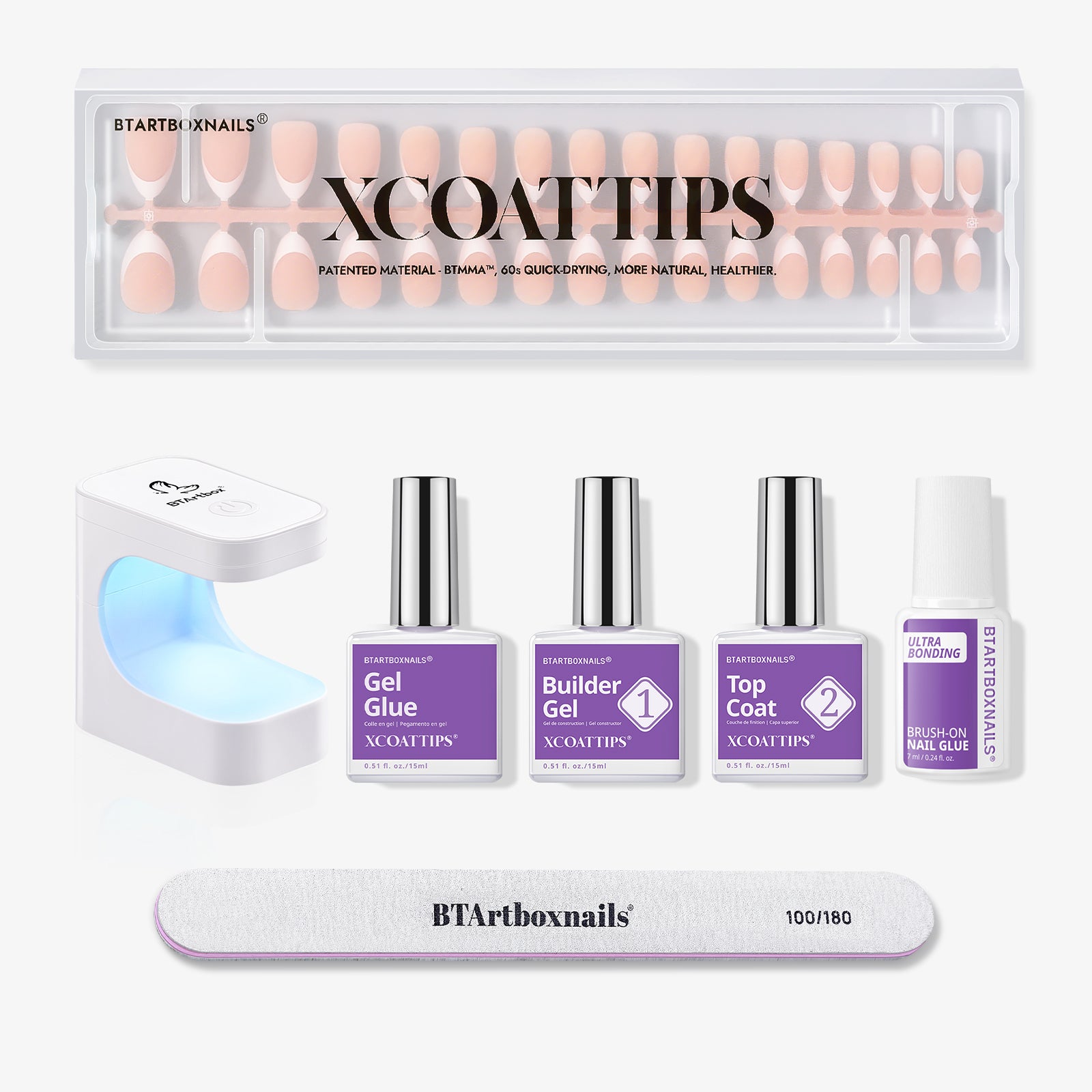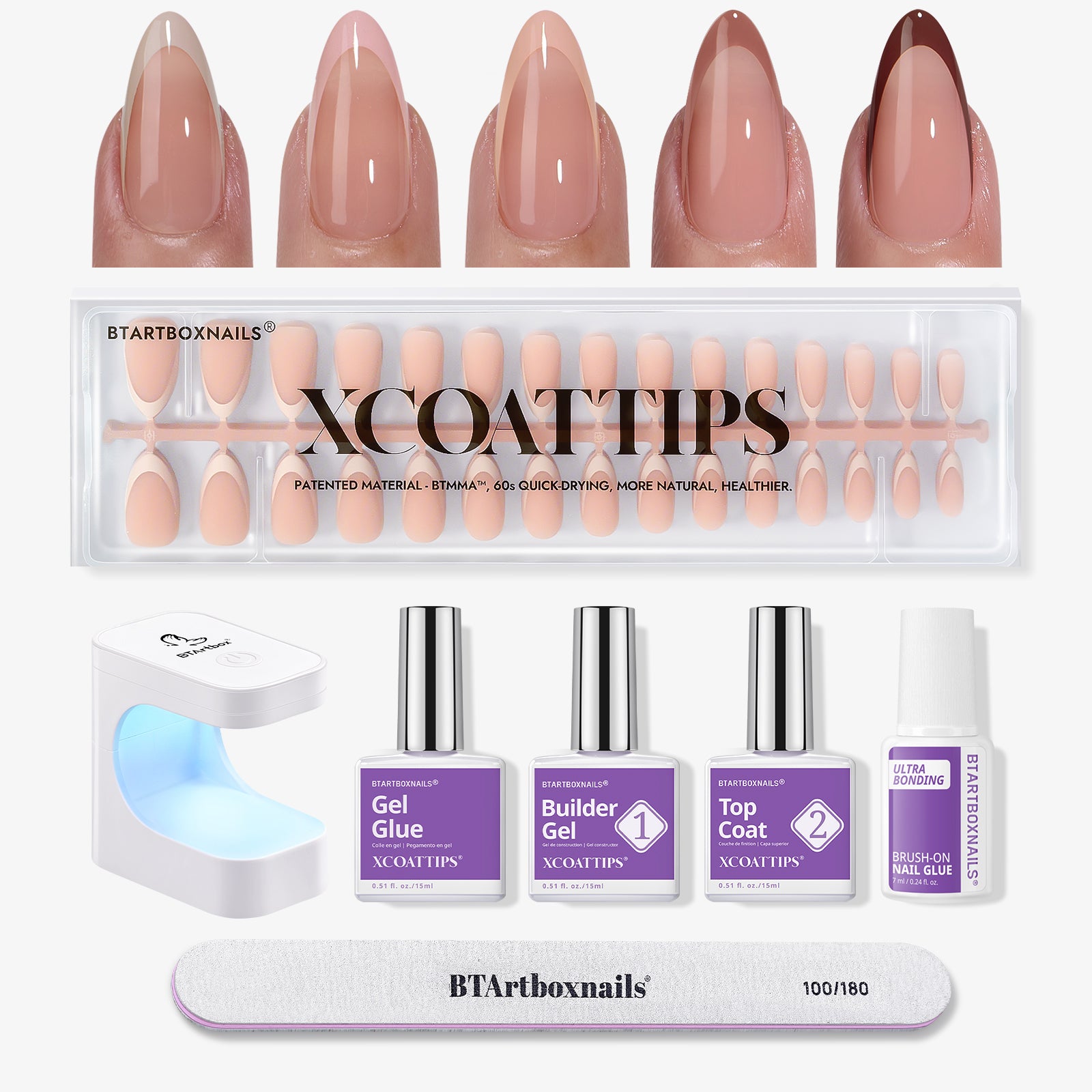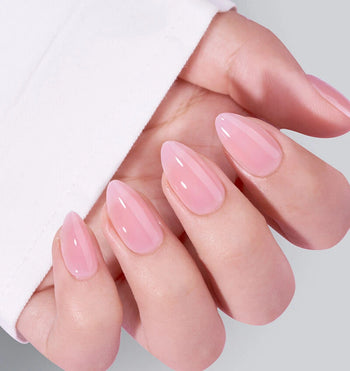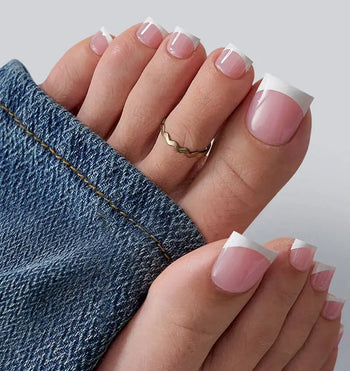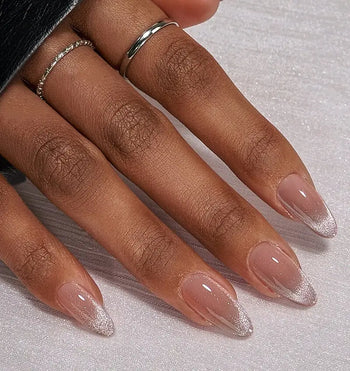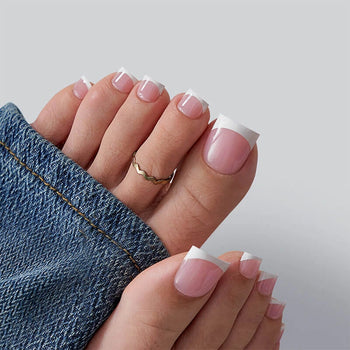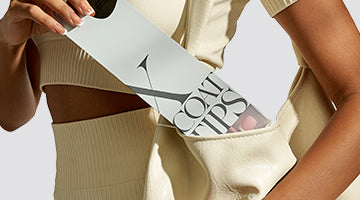Why do my press on nails hurt when they should be a painless alternative to salon acrylics? This question hits when you're stuck between loving your new look and dealing with throbbing fingertips.
The good news: You don't need to sacrifice style for comfort. Most press-on pain stems from fixable mistakes. Whether you're new to press-ons or suddenly experiencing discomfort with your usual routine, we've identified the five most common causes of painful application—plus effective solutions for a comfortable, photo-ready manicure that actually lasts.
Tired of painful press-ons? Our Summer Minimalist Nails Collection features perfectly sized options for comfortable, all-day wear. Lightweight and stylish!
Cause 1: Improper Sizing

One of the most common reasons press-on nails hurt is because they don't fit properly. When press-ons are too small or too large for your natural nails, they cause pressure, pinching, and discomfort.
How to Measure for the Perfect Fit
Finding the right size for your press-on nails is crucial for comfort. Measure the width of each natural nail at its widest point. Most press-on nail kits come with multiple sizes, typically numbered from 0 (largest) to 9 (smallest).
Hold each press-on nail against your natural nail before applying. The artificial nail should cover your natural nail from side to side without extending over the edges or pinching the skin.
Pro tip: Create a sizing chart for your nails by noting which size fits each finger. This will save you time for future applications.
Many brands offer "custom fit" options where you can order specific sizes for each finger. This can be helpful if you regularly wear press-ons.
Signs Your Press-Ons Are Too Small
When press-ons are too small, they create uncomfortable pressure on your nail bed. The tight fit can cause throbbing pain, especially at the sides of your nails where the press-on digs into your skin.
Warning signs of improper sizing:
- Pinching sensation along the sides of your nails
- Pressure pain that increases over time
- Redness around your nail beds
- Difficulty bending your fingers comfortably
- Pain that worsens when you press on the nail tip
If you feel any of these symptoms, remove the press-on immediately. Wearing improperly sized nails can damage your natural nails and cause painful inflammation.
Different nail shapes may require different sizing. Stiletto and coffin shapes may feel more comfortable with slightly larger sizes than round or oval shapes.
Cause 2: Application Mistakes
The way you apply press-on nails affects how comfortable they feel. Application errors are common but fixable causes of pain and discomfort.
Prep Errors That Lead to Discomfort
Skipping proper nail preparation leads to pain. Before applying press-ons, clean your natural nails thoroughly with nail polish remover to remove oils and residue.
Filing your natural nails too roughly or unevenly creates an uneven surface that causes pressure points under the press-on nail.
Another mistake is skipping the base coat. A thin base coat protects your natural nails and creates a barrier between your nail and the adhesive.
Rushing the sizing process also causes problems. Each press-on should match your natural nail width closely—too large or small causes pressure and pain.
Adhesive Application Problems
Using too much nail glue causes discomfort. Excess glue can seep onto your cuticles or under the nail edge, causing irritation. Apply a small dot in the center and near the base of your natural nail.
Adhesive tabs can also cause issues if placed incorrectly. They should cover most of your nail but never touch your cuticles or skin.
Improper pressure during application creates air bubbles that cause uneven pressure points. Press down evenly from the base to the tip, holding for 30-40 seconds.
Applying nails to wet or damp adhesive reduces bond strength, leading to lifting and pinching. Wait until the glue becomes slightly tacky before pressing the nail down.
Ready for comfortable, stylish nails? Our Two-Tone Nails Collection comes with easy application instructions to ensure pain-free wear. Perfect for press-on beginners!
Cause 3: Poor Quality Press-On Nails
The quality of your press-on nails plays a huge role in comfort. Low-quality options often contain harsh chemicals and inferior materials that can lead to pain and skin reactions.
Materials That Cause Sensitivity
Cheap press-on nails often contain higher levels of methacrylates and formaldehyde resins, which are known skin irritants. These chemicals can trigger allergic reactions, especially if you have conditions like eczema or psoriasis. Your skin might become red, itchy, or develop small bumps where the nail adhesive touches your skin.
Some budget brands use rigid, inflexible plastics that put excessive pressure on your natural nails. This pressure can cause throbbing pain that worsens the longer you wear them.
If you have allergies, be cautious of press-ons with added fragrances or dyes, as these can penetrate through the nail bed and cause sensitivity.
Identifying Low-Quality Press-Ons
Check the thickness and flexibility of the press-on nails before purchasing. Quality nails should be somewhat flexible and thin at the cuticle edge. Overly thick, rigid nails are usually lower quality and more likely to cause pain.
Look for rough edges or uneven surfaces. High-quality press-ons have smooth edges and uniform thickness throughout.
Read the ingredients list carefully. Avoid products with unlisted ingredients or those marketed as "extra strong" without specifying materials.
Price can be an indicator too. Extremely cheap options often use inferior materials that can trigger allergic reactions.
Cause 4: Natural Nail Damage Underneath

Sometimes the pain from press-on nails comes from damage that already exists on your natural nails. When you apply press-ons over compromised nail beds, you can experience significant discomfort or worsen existing issues.
Identifying Compromised Nail Beds
Your natural nails may have damage you don't notice until you apply press-ons. Look for discoloration (yellowing or white spots), ridges, or thinning before application.
If your nails are soft, brittle, or peeling, they're vulnerable to further damage. A fungal infection often shows as yellow or white patches, thickening, or crumbling edges.
Pain after applying press-ons could indicate underlying issues like fungal infections or paronychia (infection of the skin around nails). Watch for redness, swelling, or warmth around the nail beds.
Warning signs your natural nails are damaged:
- Tenderness when pressed
- Separation of nail from bed
- Unusual shape or texture changes
- Inflammation around cuticles
Healing Damaged Natural Nails
Give your nails regular breaks between press-on applications. Experts recommend at least 1-2 weeks without artificial nails to let your natural nails recover.
Daily nail care routine:
- Keep nails clean and dry
- Apply cuticle oil daily
- Use a nail strengthener with keratin
- Trim regularly to prevent ingrown nails
For fungal infections, use over-the-counter antifungal treatments consistently for several weeks. Severe cases may require prescription medication.
Boost nail health by drinking plenty of water and eating foods rich in biotin and protein. Supplements containing biotin, calcium, and vitamin E can help strengthen weak nails.
If pain persists or you notice signs of infection (pus, increasing redness, fever), consult a healthcare provider promptly.
Cause 5: Trapped Moisture or Air
When press-on nails don't sit flat against your natural nail, tiny pockets of air or moisture can get trapped underneath. These pockets create pressure that can lead to throbbing pain and discomfort.
The Pressure Problem Explained
Trapped air or moisture creates pressure points under your press-on nails. As you type, touch things, or apply pressure to your nails, these air bubbles compress and push against your natural nail bed. This pressure can cause a persistent aching sensation that worsens throughout the day.
The problem becomes more noticeable when your hands get warm, as trapped moisture expands. You might notice bubbles appearing under clear press-ons, which indicates air pockets. These bubbles not only cause discomfort but also weaken the adhesion, making your press-ons more likely to pop off.
Prevention Techniques for Air Pockets
Proper preparation prevents trapped air. Before application, clean your natural nails thoroughly with alcohol to remove oils and moisture. Buff gently to create a slightly textured surface for better adhesion.
Apply adhesive or glue in a thin, even layer across your entire nail. Press from the center outward when applying each nail, which pushes air toward the edges instead of trapping it underneath.
Try the "floating method":
- Apply glue to your natural nail
- Hold the press-on slightly above
- Drop it into place
- Press firmly
This technique minimizes air bubbles by avoiding the sliding motion that can trap air. If you notice bubbles forming, gently lift the edge and release the air before the adhesive sets.
Other Professional Solutions for Painful Press-Ons
When press-on nails cause discomfort, professional techniques can provide quick relief and better long-term results. Nail professionals use methods that protect nail health while ensuring a comfortable fit.
Immediate Relief Methods
If you're experiencing pain from press-on nails, try these professional solutions:
- Soak and Remove: Fill a small bowl with warm water and add a few drops of cuticle oil. Soak your fingertips for 10-15 minutes to loosen the adhesive.
-
Acetone Wrap Method: Saturate cotton balls with acetone-based remover, place them on nails, then wrap each finger with aluminum foil. Wait 15 minutes before gently removing the press-ons.
-
Apply Cuticle Oil: After removal, massage cuticle oil into your nail beds to reduce inflammation and hydrate damaged tissue.
- Rest Period: Give your natural nails 3-5 days to recover before applying new press-ons.
Looking for gentle press-ons that won't hurt sensitive nails? Our Earthy Nails Collection uses premium materials designed for comfort. Natural beauty without the pain!
Conclusion: Why Do My Press-On Nails Hurt?
Understanding why your press-on nails hurt is the first step to enjoying them pain-free. With proper sizing, application techniques, and quality products, you can wear stunning nails without discomfort.
Remember that occasional breaks between sets help maintain your natural nail health. Want to take your nail game to the next level? Check out our guide to the best nail art tools for creating custom designs on your comfortable press-ons!
Frequently Asked Questions: Why Do My Press-On Nails Hurt?
How do you stop fake nails from hurting?
Choose the right size nails for your fingers. File edges after application to remove sharp points. Apply less adhesive to prevent pressure.
Is it normal for press-on nails to hurt?
No, press-ons shouldn't hurt when applied correctly. Mild pressure is normal for the first hour. Sharp or ongoing pain indicates a problem with fit or application.
Do press-on nails damage your natural nails?
Press-ons cause less damage than other artificial methods. Improper removal or excessive adhesive can harm nails. Apply strengthener before use and take breaks between sets.
How to safely remove press on nails?
Soak in warm soapy water for 10-15 minutes. Apply cuticle oil around edges to help dissolve adhesive. Never force removal if resistance is felt.
